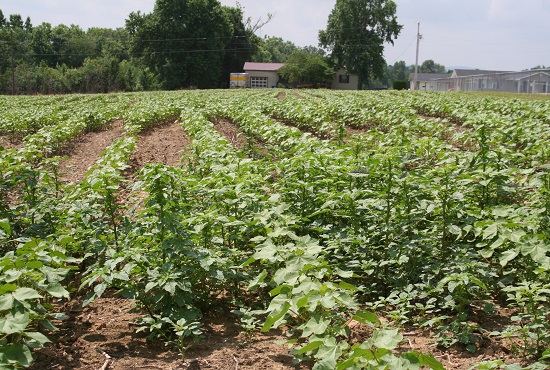U.S. Cotton Gearing Up
Like all cotton-producing nations, the United States needs a good year. Or at least a decent year. Along the entire supply chain, the American cotton industry wants to prove that it is heading in a positive direction and that the challenges of the past several years are behind it.
Fortunately for the U.S., early signs say that 2010//11 will be a good cotton year.
“Across the U.S. Cotton Belt, especially in Texas and other parts of the Southeast, folks are feeling better about the industry,” says Dr. Mark D. Lange, president and CEO of the National Cotton Council (NCC) of America. The NCC represents the interests of American cotton producers, ginners, warehousers, merchants, cottonseeders, cooperatives and manufacturers. “The good news for us is that the world needs a great deal of U.S. cotton. And since prices are a little stronger than they have been in the last six or seven years, that’s giving people a general sense of optimism.”
China Needs U.S. Cotton
It’s true. Demand for cotton is on the rise and consumers will rely on the United States — the world’s largest cotton exporter — to supply much of the fiber. Earlier this year, Joseph W. Glauber, chief economist for the United States Department of Agriculture (USDA), put a number on the need, reporting that “world cotton production (up 10.5 percent) and consumption (up 2.6 percent) are both projected to rise in 2010-11, with world consumption outpacing the increase in production due to continued economic recovery.”
As prices have risen with the increasing demand, American producers have been persuaded to increase plantings for the 2010 growing year. In fact, this will be the first increase in cotton acreage in the U.S. in the last three years. A March report from the USDA projected U.S. planted area at 10.5 million acres, up 15 percent from 2009. This would produce a crop of 16.0 million bales, up nearly 30 percent from 2009 based on a normal weather assumption.
Of the total projected crop, “U.S. exports will be limited by available supplies and are forecast at 12.6 million bales, leaving ending stocks of about 3.4 million,” Glauber reported.
China, the world’s leading consumer of cotton, is thought to be in significant need of cotton supply this year. China’s domestic planting of cotton is forecast to decline by 4.9 percent from 2009, while its imports may increase by as much as 30 percent, according to the Chinese Academy of Agricultural Sciences.
Interestingly, the U.S. share of Chinese imports was 60 percent in 2008/09, but dropped to 25 percent in 2009/10. During that same period, India’s share of Chinese imports rocketed from 10 percent in 2008-09 to 40 percent in 2009/10. This April, however, the Government of India announced a ban on cotton exports. If the ban lasts, it could mean a windfall for American cotton, as it would once again become the chief cotton supplier to China.
Supply Chain Report
Across the various sectors of the U.S. cotton industry, anticipation is building. And that feeling starts with the producers. “Most regions have adequate soil moisture heading into the season, which is different than the last several years. From the reports I’ve seen, Texas is setting up for a particularly big crop this year,” says Lange. “More acres are being planted to cotton and planting conditions are favorable. There is a sense that world demand for cotton is coming back and that certainly makes producers more confident about their decision to increase plantings.”
As for manufacturers, many are seeing 2010 as the year to reinvest in their operations to strengthen their position for the future. “We have done two things to gear up for this year. First, we secured enough raw cotton to take care of our customers needs for the year . Second, we have added capacity to meet the increase in demand,” says Anderson D. Warlick, president and CEO of Parkdale Mills Inc., Gastonia, North Carolina, and vice president of the NCC’s Board of Directors. “Also, our capital expenditures this year will be $75 million.”
The U.S. merchant sector, which has struggled through the last few years, has a little more spring in its step these days, too, says Lange. “World demand seems to be growing again and the textile mills are doing business. That’s good news for merchants.”
Finally, Lange notes, “U.S. warehousers are going into the year pulling down stocks in the warehouses — their base is really turning over now. Since they’ve had less cotton in stock during the past few years, they’ll have the capacity to have a lot more new cotton move in. I expect we’ll see higher volume at the warehouses this year.”
caption1:
Mark Lange








